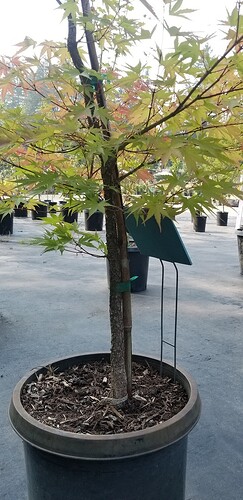Stumbled across this pine bark maple 2 days ago. It’s in a 15 gallon pot, don’t see any graft union, might be grown from seed. I forgot to ask the nursery lady. There’s another one with a slightly thicker trunk base and shorter in height. Which is now in my backyard 
Check out the bark on the trunk!
Anyway, does anyone know if these back bud even from the thick bark?
Thank you.
2 Likes
It probably is like every other maple, if you prune hard, it will send new shoots out everywhere. I do have a lot of experience with boxelders, which is also a maple. It gets bark twice as thick as you have there and when hard pruned it will send shoots from 2-3 inches from the bottom on the oldest part of the tree. More than likely very safe here. Cut away.
1 Like
Awesome! Thank you! I will likely plant this in a wooden box for a while first. I might do it this weekend and keep it in the backyard with morning sun.
I have had back budding on one. Not a lot compared to other maples but it allowed me to put a branch where I wanted one. I have used a number of thread grafts on them as well to create lower branches.
1 Like
Nice. Thank you @Blown55.
As an alternative you could air layer the top and larger limbs off as potential trees and allow the the original tree to recover and give you more trees down the road.
1 Like
That’s what I am planning to do. @KevinNGa. Thanks! This maple and my pear tree.
Corkbark Japanese maples are not known to be prolific back-budders, especially from the thick corky bark areas. Of course the younger it is the better the chances for back budding.
1 Like
That’s what I though but wasn’t sure. I have a very old dogwood with thick bark in the landscape I cut down to a stump due to infestation. It back budded a year later.
![]()
